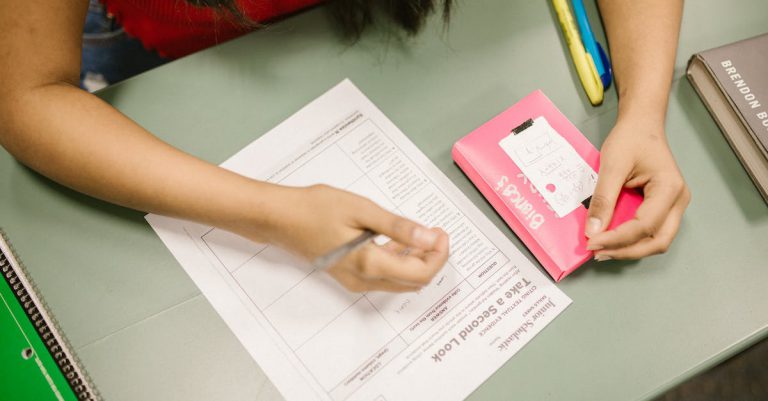Are you interested in becoming a flight attendant but not sure how long it takes to complete the required training? Look no further! In this article, we will provide you with a comprehensive guide on how long flight attendant school is and what you can expect in terms of training and education.
If you’re short on time, here’s a quick answer to your question: Flight attendant school typically lasts between 6 to 8 weeks, but the length of training can vary depending on the airline and the type of aircraft you will be working on. Now, let’s dive deeper into what to expect during flight attendant training and how to prepare for this exciting career.
What is Flight Attendant School?
Flight attendant school, also known as flight attendant training, is a program designed to teach individuals the necessary skills and knowledge to become a flight attendant. Flight attendants are responsible for ensuring the safety and comfort of passengers on board an aircraft. They also assist passengers with their needs, provide in-flight services, and handle emergency situations.
Overview of Flight Attendant Training
Flight attendant training typically lasts between 4 to 8 weeks, depending on the airline. During this time, trainees are taught a variety of subjects, including safety procedures, emergency evacuations, first aid, customer service, and aviation regulations. They also learn how to serve food and beverages, handle difficult passengers, and provide exceptional customer service.
The training is intense and rigorous, as flight attendants must be prepared to handle any situation that may arise during a flight. They must also be physically fit and able to lift heavy objects, as well as stand for long periods of time.
Requirements for Becoming a Flight Attendant
The requirements for becoming a flight attendant vary by airline, but most require a high school diploma or equivalent. Some airlines may also require a college degree, customer service experience, or fluency in a second language.
In addition to educational requirements, flight attendants must also meet certain physical requirements, such as height and weight restrictions. They must also pass a medical examination and a background check.
Types of Aircraft and Airlines
The type of aircraft and airline you work for can also impact your flight attendant training. For example, flight attendants who work on international flights may receive additional training in cultural awareness and foreign languages. Those who work on smaller aircraft may receive training on how to handle emergency situations in a confined space.
It’s important to research the airline you are interested in working for to understand their specific requirements and training program.
Pro Tip: If you are interested in becoming a flight attendant, consider taking a short course in customer service or hospitality to help build your skills and make you a more competitive candidate.
How Long is Flight Attendant School?
Duration of Flight Attendant School
The duration of flight attendant school varies depending on the airline and the type of program. On average, flight attendant training lasts between four to eight weeks. However, some programs can take up to six months to complete.
Factors that Affect the Length of Training
Several factors can affect the length of flight attendant training. One of the most significant factors is the airline’s training program. Some airlines have more extensive training programs that cover a wider range of topics, which can result in longer training periods.
Another factor that affects the length of training is the type of aircraft that the airline operates. If the airline has a diverse fleet, flight attendants may need to undergo additional training to work on different types of aircraft.
Lastly, the airline’s location can also impact the length of training. If the airline operates in a region with different regulations or cultural practices, flight attendants may need to receive additional training to work with passengers from those regions.
Overview of the Training Curriculum
The training curriculum for flight attendants covers a wide range of topics. Some of the subjects covered in the training program may include emergency procedures, first aid, customer service, and airline policies and procedures.
In addition to classroom instruction, flight attendants also receive hands-on training in simulated cabin environments. This training allows flight attendants to practice emergency procedures, such as evacuating passengers from the aircraft, in a safe and controlled setting.
Overall, flight attendant school can be a rigorous and demanding experience. However, with the right training and preparation, flight attendants can excel in their roles and ensure the safety and comfort of their passengers.
What to Expect During Flight Attendant Training?
Becoming a flight attendant requires completing an intensive training program that covers a range of topics. Here’s what to expect during flight attendant training:
Physical training and drills
Flight attendants must be in good physical condition to perform their duties, including lifting heavy items, pushing carts, and standing for long periods of time. During training, you’ll participate in physical drills to help you build the strength and stamina you need to excel on the job.
Emergency procedures and safety protocols
Safety is a top priority for airlines, and flight attendants are responsible for ensuring passengers are aware of emergency procedures and safety protocols. During training, you’ll learn how to handle a range of emergency situations, including fires, medical emergencies, and evacuations.
You’ll also learn how to operate safety equipment, such as oxygen masks, life vests, and emergency exits. This training is critical for ensuring the safety of passengers and crew members.
Customer service and communication skills
Flight attendants are often the face of the airline, and they play a critical role in ensuring customer satisfaction. During training, you’ll learn how to interact with passengers in a friendly and professional manner, handle difficult situations, and provide exceptional customer service.
You’ll also learn how to communicate effectively with other crew members and airline staff, including pilots and ground crews. Strong communication skills are essential for ensuring a smooth and efficient flight.
In-flight service and food preparation
Flight attendants are responsible for providing in-flight service, including serving food and beverages, and preparing meals. During training, you’ll learn how to prepare meals, handle food safely, and serve passengers in a professional manner.
You’ll also learn how to manage inventory and supplies, and how to handle cash and credit card transactions. This training is critical for ensuring a high level of customer service and satisfaction.
How to Prepare for Flight Attendant School?
Flight attendant school is an exciting journey that requires adequate preparation to succeed. Whether you’re just starting your career or transitioning from another field, here are some tips to help you prepare for flight attendant school.
Physical fitness and health requirements
Flight attendants have physically demanding jobs that require them to be on their feet for extended periods and handle heavy luggage. Therefore, airlines have strict physical fitness and health requirements that candidates must meet. Most airlines require candidates to be at least 18 years old, possess a high school diploma or equivalent, and be in good physical health. Some airlines may also require a specific height and weight range.
Education and language skills
While a college degree is not always a requirement for flight attendant positions, it can give you an advantage over other candidates. Additionally, most airlines require flight attendants to be fluent in English and another language, particularly Spanish or a language spoken in the regions they serve. So, if you’re planning to pursue a career as a flight attendant, it’s essential to brush up on your language skills.
Customer service and hospitality experience
Flight attendants are the face of the airline and are responsible for ensuring that passengers have a pleasant experience on their flights. Therefore, airlines favor candidates with previous customer service and hospitality experience. This experience may include working in a restaurant, hotel, or retail store. It can also include volunteer work that involves working with people.
Interview tips and tricks
Interviews are an essential part of the flight attendant hiring process. They give airlines a chance to assess a candidate’s personality, communication skills, and ability to handle challenging situations. To succeed in flight attendant interviews, it’s important to research the airline beforehand, dress professionally, and practice responding to common interview questions. You should also emphasize your customer service and hospitality experience, language skills, and ability to work well in a team.
By following these tips, you can prepare yourself for flight attendant school and increase your chances of landing a job in the aviation industry.
Conclusion
In conclusion, flight attendant school is an essential step towards a fulfilling career as a flight attendant. While the duration of the training can vary depending on the airline and the type of aircraft, you can expect to complete the program within 6 to 8 weeks. During your training, you will learn a variety of skills, from emergency procedures and safety protocols to customer service and communication skills. By preparing yourself physically, mentally, and emotionally, you can increase your chances of success in this competitive field. Best of luck in your journey to becoming a flight attendant!






